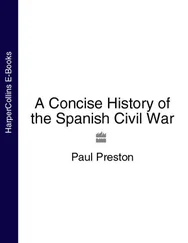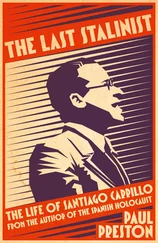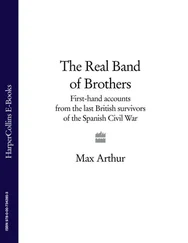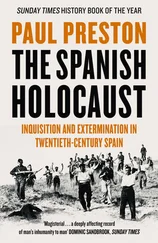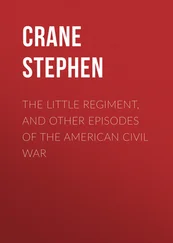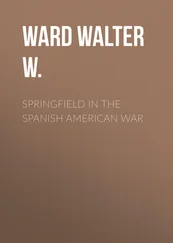1 ...6 7 8 10 11 12 ...23 The discontent of the Basque and Catalan industrialists had already seen them mount challenges to the Spanish establishment by sponsoring their respective regionalist movements – the Partido Nacionalista Vasco (PNV) and the Lliga Regionalista. The leader of the Lliga, the shrewd Catalan financier Francesc Cambó, emerged as spokesman for the industrialists and bankers. He believed that drastic action was necessary if a major revolutionary cataclysm was to be avoided. Now the reforming zeal of industrialists enriched by the war coincided with a desperate need for change from a proletariat impoverished by it. Boom industries had attracted rural labour to towns where the worst conditions of early capitalism prevailed. This was especially true of Asturias and the Basque Country. At the same time, massive exports created shortages, rocketing inflation and plummeting living standards. After a number of dramatic bread riots, the Socialist UGT and the anarcho-syndicalist CNT were drawn together in the hope that a joint general strike might bring about free elections and then reform. While industrialists and workers pushed for change, middle-ranking army officers were protesting at low wages, antiquated promotion structures and political corruption. A bizarre and short-lived alliance was forged in part because of a misunderstanding about the political stance of the army.
Military discontent was related to a division within the army between those who had volunteered to fight in Africa – Africanistas – and those who had remained on the peninsula – peninsulares . For those who had fought in Africa the risks were enormous but the prizes, in terms of adventure and rapid promotion, high. The rigours and horrors of the Moroccan tribal wars brutalized the beleaguered Africanistas , who began to see themselves as a heroic band of warriors who, in their commitment to defending the Moroccan colony, were alone concerned with the fate of the patria . Long before the establishment of the Second Republic, this had developed into contempt for professional politicians, for the pacifist left-wing masses and, to a certain extent, for the peninsulares . The mainland represented a more comfortable but boring existence with promotion only by strict seniority. When salaries started to be hit, like those of civilians, by wartime inflation, there was resentment among the peninsulares against the Africanistas who had gained more rapid promotion. The peninsulares created the Juntas Militares de Defensa, rather like trade unions, to protect the seniority system and to seek better pay.
The Juntas’ complaints were couched in the language of reform which had become fashionable after Spain’s loss of empire in 1898. The intellectual movement known as ‘Regenerationism’ associated the defeat of 1898 with political corruption. Ultimately, ‘Regenerationism’ was open to exploitation by either the right or the left since among its advocates there were those who sought to sweep away the degenerate caciquista system by democratic reform and those who planned simply to crush it by the authoritarian solution of ‘an iron surgeon’. However, in 1917 the officers who mouthed empty ‘Regenerationist’ clichés were acclaimed as the figureheads of a great national reform movement. For a brief moment, workers, capitalists and the military were united in the name of cleansing Spanish politics of the corruption of caciquismo . Had the movement been successful in establishing a political system capable of permitting social adjustment, the Civil War would not have been necessary. As things turned out, the great crisis of 1917 merely consolidated the power of the entrenched landed oligarchy.
Despite a rhetorical coincidence of their calls for reform, the ultimate interests of workers, industrialists and officers were contradictory and the system survived by skilfully exploiting these differences. The Prime Minister, the astute Conservative Eduardo Dato, conceded the officers’ economic demands and promoted the ringleaders of the Juntas. He then provoked a strike of Socialist railway workers, forcing the UGT to act before the CNT was ready. Now at peace with the system, army officers – both peninsulares and Africanistas – were happy to defend it in August 1917 by crushing the striking Socialists, which they did with considerable bloodshed. Alarmed by the prospect of militant workers in the streets, the industrialists dropped their own demands for political reform and, lured by promises of economic modernization, joined in a national coalition government in 1918 with both Liberals and Conservatives. Once again the industrial bourgeoisie had abandoned its political aspirations and allied with the landed oligarchy out of a fear of the lower classes. Short-lived though it was to be, the coalition symbolized the slightly improved position of industrialists in a reactionary alliance still dominated by the landed interest.
By 1917, Spain was divided more starkly even than before into two mutually hostile social groups, with landowners and industrialists on one side and workers and landless labourers on the other. Only one numerous social group was not definitively aligned within this broad cleavage – the smallholding peasantry. Significantly, in the years before and during the First World War, efforts were made to mobilize Catholic farmers in defence of big landholding interests. With anarchism and Socialism making headway among the urban workers, the more far-sighted landowners were anxious to stop the spread of the poison to the countryside. Counter-revolutionary syndicates were financed by landlords from 1906 but the process was systematized after 1912 by a group of dynamic social Catholics led by Ángel Herrera, the éminence grise of political Catholicism in Spain before 1936. Through his organization of determined social Christian activists, the Asociación Católica Nacional de Propagandistas, Herrera helped set up a series of provincial Catholic Agrarian Federations which tried to prevent impoverished farmers turning to the left by offering them credit facilities, agronomic expertise, warehousing and machinery in return for their adoption of virulent anti-socialism. Many of those recruited were to play an important role when the landed oligarchy was forced to seek more modern forms of defence in the 1930s first by voting for the legalist parties of the right during the Second Republic and later by fighting for Franco.
In the aftermath of the crisis of 1917, however, the existing order survived in part because of the organizational naïvety of the left and even more because of its own ready recourse to armed repression. The foundation of the Communist International (Comintern) in March 1919 imbued the Spanish ruling classes with the same fear of bolshevism that afflicted all European countries. The defeat of the urban Socialists in 1917 had not marked the end of the assault on the system. Between 1918 and 1921, three years known as the trienio bolchevique , the anarchist day-labourers of the south took part in a series of risings. Eventually put down by a combination of the Civil Guard and the army, the strikes and land seizures of these years intensified the social resentments of the rural south. At the same time, urban anarchists were also coming into conflict with the system. Northern industrialists, having failed to invest their war profits in modern plant and rationalization, were badly hit by the post-war resurgence of foreign competition. The Catalans in particular tried to ride the recession with wage cuts and lay-offs. They countered the consequent strikes with lockouts and hired gunmen. The anarchists retaliated in kind and, from 1919 to 1921, the streets of Barcelona witnessed a terrorist spiral of provocations and reprisals. A split in the PSOE over whether or not to join the Comintern led to a factional split with the more radical elements forming the Communist Party in November 1921. The Communists’ influence was immediately felt in a series of strikes in the Asturian coal mines and the Basque iron and steel industry. It was obvious that Restoration politics were no longer an adequate mechanism for defending the economic interests of the ruling classes. Moreover, the credibility of the system was rocked by the overwhelming defeat of the Spanish forces by Moroccan tribesmen at Annual in June 1921.
Читать дальше



